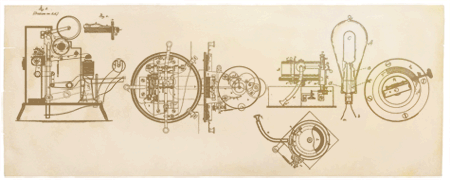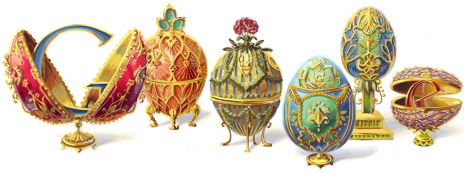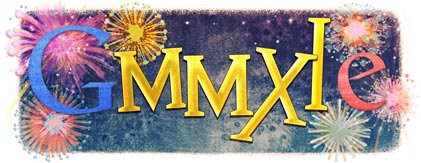Saturday, December 22, 2007
| |
Rais Mstaafu Alhaji Ali Hassan Mwinyi akikata keki maalum wakati wa sherehe za kuadhimisha mwaka mmoja toka kuanzishwa 'Habarileo', gazeti la kwanza la Kiswahili la serikali kwenye makao makuu ya Tanzania Standard Newspapers (TSN) wachapaji was magazeti ya serikali mtaa wa Samora leo. Wengine wanaoshuhudia ni Waziri wa Habari, Utamaduni na Michezo, Muhammad Seif Khatibu (wa pili kushoto), Naibu Mwenyekiti wa Bodi ya TSN, Profesa Amandina Lihamba na na Naibu Mhariri Mtendaji wa TSN , Mkumbwa Ally. (Picha na Muhidin Michuzi) |
Posted by Unknown at 12/22/2007 07:56:00 AM
Friday, December 21, 2007
Pongezi kwa wana habari leo kwa kutimiza mwaka. Kwani nyie ndiye Gwiji la habari Tanzania
|
Posted by Unknown at 12/21/2007 07:36:00 AM
Excavation adventures in the Valley of the Kings
LONDON, England (CNN) -- A few years back, when I was working as part of an archaeological mission in the Valley of the Kings in Egypt, I unearthed a slab of white limestone covered in ancient paint smears. More of that later. First, however, I should tell you about the 3,000 year-old gold jewelry.
I found the jewelry in a tomb known as KV56 (all burials in the Valley of the Kings are designated with a KV number, the most famous being KV62 -- Tutankhamun).
Located about 20 meters west of Tut's final resting place, KV56 is a small, unattributed shaft tomb -- basically a rock-cut burial chamber at the bottom of a vertical shaft -- which had originally been discovered in 1908 by American excavator Theodore M. Davis.
Badly damaged and clogged with compacted mud and debris, the tomb had nonetheless yielded a fabulous array of late Nineteenth Dynasty (c. 1200 BC) royal jewelry, prompting Davis to nickname it The Gold Tomb.
Archaeological methods in 1908 not being quite as thorough as they are today, the team of which I was a member spent two years re-excavating KV56, sifting the dirt and rubble with which it was still filled to see if Davis and fellow excavator Edward Ayrton had overlooked anything. As indeed they had.
Among other objects, we pulled out a series of lotus-shaped gold necklace pendants, a miniature beaten-gold head of the goddess Hathor and a rectangular gold pectoral (chest-plate) link stamped with the cartouche, or royal name, of the pharaoh Seti ll (Davis had found 13 similar links which can now be viewed in the Cairo Museum). Exquisitely worked and perfectly preserved, these objects were the first, and to date only items of jewelry to have been found in the Valley since Howard Carter unearthed Tutankhamun in 1922.
I recount this story not out of boastfulness -- although I must confess a twinge of pride at being involved in such discoveries -- nor because the objects themselves were of any intrinsic archaeological value. Rather, because where Egyptian archaeology is concerned, and in particular the archaeology of that most spectacular of burial grounds, the Valley of the Kings, tales of tombs and buried treasure seem to be the only way of really grabbing people's attention.
This, if anything, has been the real Curse of Tutankhamun, whose own fabulous treasures -- or at least some of them -- are currently in London as part of a much-hyped nine-month exhibition.
While the boy-king's discovery massively raised the profile of archaeology, generating a widespread popular interest in the subject that persists to this day, it at the same time created a false expectation that what archaeology is primarily about is digging up graves full of stupendous gold artifacts.
Don't get me wrong; I am as mesmerized as the next person by the Tutankhamun treasures. Nor am I immune to the excitement and mystique of tomb archaeology. To work in an ancient burial chamber, as I did in KV56, is a magical experience, tapping into those deep-seated childhood fantasies of exploration and adventure, of burrowing down into a secret, hidden world and finding wonderful things concealed therein.
At the same time, it has always slightly saddened me that while our team made hugely significant discoveries in terms of the stratigraphy and topography of the Valley of the Kings, and the lives and activities of the workers who labored there, it is the gold jewelry that always seems to get people excited at dinner parties.
I must apologize, therefore, that having started with a tale of buried treasure, I'm going to cheat you and not say anything more about it. Instead I am going focus on some of the other, less immediately dramatic discoveries of my years excavating in the Valley -- discoveries which nonetheless, for me at least, get to the very heart of what makes archaeology such a powerful discipline.
I worked there for four years, from 1998-2002, as a member of The Amarna Royal Tombs Project, an international expedition headed by two English archaeologists -- Dr. Nicholas Reeves and Professor Geoffrey Martin. Although clearing KV56 was one of the tasks we undertook, our principal concern lay with the study and excavation of the central portion of the Valley, around the tomb of Tutankhamun, parts of which had remained untouched since ancient times.
The Wadi Biban al-Moluk as it is known in Arabic -- or or Ta Set Aat to give it its ancient name, the Great Place -- was, as you may or may not be aware, the principal royal necropolis of the rulers of Egypt's New Kingdom (c.1550-1070 BC).
As well as being a burial ground, however, it was also, in ancient times as today, a hive of bustle and activity, full of laborers, craftsmen, artists, guards, scribes and administrative officials. It was this living, vibrant aspect of the Valley that particularly interested us.
To condense four years painstaking excavation into a single article is impossible, and so I shall gloss over much of what we did and found -- including the missing corner of the pharaoh Horemheb's sarcophagus and the ostracon (small limestone flake) bearing the name of a hitherto unknown Ramessid queen -- and instead home in on just one area of our work: trying to find out more about the men who actually dug and decorated the tombs.
As it happens we already know quite a lot about them from earlier excavations at Deir el-Medina, a site about two kilometers away on the other side of the Theban Hills where they and their families lived.
Known in ancient times as Set Maat, the Place of Truth, this ancient village has yielded literally thousands of papyri fragments and ostraca from which we have learnt everything from the workmen's names, addresses and specialist crafts to the court cases they were involved in and whose wife they were knocking off. There is even a record of the world's first industrial dispute, when, during the reign of Ramesses lll (1194-1163 BC), workers downed tools and staged a temple sit-in because they had not received their promised rations of grain.
While Deir El-Medina has been exhaustively dug, no detailed study has ever been carried out of similar remains in the Valley. So far as their daily work lives are concerned, the craftsmen who cut and decorated tombs that today wow millions of visitors have to all intents and purposes disappeared from history (there is an interesting parallel here with modern Egyptian laborers, whose crucial contribution to the uncovering of their country's past has also been shamefully overlooked).
This was the gap we were hoping to fill, specifically by excavating a series of ancient workers' huts that once sat on the Valley floor and which are now, 3000 years later, buried beneath five meters of compacted sand and rubble.
The existence of these huts has long been known (Howard Carter dismantled one such group to get to Tutankhamun). We were the first expedition to systematically dig and record them, however, in the process turning up numerous artifacts from which we were able to build a picture, albeit an incomplete one, of what life was like in the Valley three millennia ago.
Now I freely admit that, on the face of it, the fact that a group of navvies once snacked on fish and bread, worshipped at small, makeshift shrines, scribbled notes to themselves, practiced their drawing and amused each other with scurrilous graffiti of stubble-chinned pharaohs and men with giant penises -- none of this is especially glamorous or earth shattering, particularly when measured against the amazing objects found a few meters away in Tut's tomb.
For me, however, it is their very mundanity that makes these type of discoveries so powerful, offering as they do a glimpse into the daily workings of a world far removed from our own.
Not the rarified world of kings and queens, but rather the world of real, living, everyday people. People who -- guess what? -- were actually very similar to ourselves. They went to work, enjoyed their breaks, drunk beer (the favorite tipple of the ancient Egyptians), gossiped, grouched, passed the time by exchanging jokes and rude images. It's like peering through a keyhole into long room, at the end of which is a mirror in which we catch a distant reflection of our own selves. Suddenly a connection is made, a bridge is built.
All of which brings me back to the large, paint-smeared slab of limestone I mentioned at the start of this article. It was the very first object I ever found in the Valley, and although less overtly dramatic than just about everything else we dug up over the next four years, it remains the find that gives me the most pleasure.
15 centuries before the birth of Christ, a workman has finished his shift in the tombs and, sweat-drenched and knackered, has squatted down in his shelter, taken a refreshing swig of beer and cleaned off his paint brushes by smearing them across a piece of rock, just as decorators and DIY-ers the world over do every day.
His name is lost, his face is lost, everything about him is lost save for that single fleeting instant of his existence. And now that instant has popped up in our own age, as though e-mailed to us across the millennia.
This, for me, is why archaeology is such a special discipline, one that has, with the exception of times spent with my wife and newborn son (and the day I got my photo taken with Orinoco from the Wombles) provided the most cherished moments of my life.
It doesn't save the world, or stop global warming, or offer a cure for cancer. What it does achieve is to make connections between people from wildly diverging times and cultures, and through those connections underline the universality of mankind, the fact that in essence we are all pretty much the same. Archaeology is many things, but above all it is a profoundly humanizing discipline.
As you can see, I get quite fired up by all of this. If I haven't convinced you, however, and you are still hankering after tombs and treasure, I feel I should reward your perseverance in reading this far with an admission: our team did in fact locate, if not excavate, two hitherto undiscovered subterranean chambers in the Valley. Or at least two "anomalies" on the ground-penetrating radar-survey we conducted of the Valley floor which were strongly suggestive of such chambers.
One of these was subsequently dug, in 2005-6, by an American team from the University of Memphis, who were working independently of our expedition and were wholly unaware of our earlier survey. It did indeed prove to be a tomb, empty save for an array of storage jars and seven coffins full of mummification equipment (it has since been designated KV63).
The other anomaly is yet to be explored. Radar-surveys can be notoriously unreliable, but the possibility is there that this too is a tomb, and perhaps an intact one. There are a number of ancient figures whose final resting place has never been located, most notably the so-called "Amarna women," a group of queens and princesses that include Kiya, the mother of Tutankhamun, Ankhesenamun, his wife and, most famous, the fabled Nefertiti.
Could this be where one or all of their remains are interred? If so it would be an extraordinary find, right up there with Carter's discovery of Tutankhamun. For myself, however, I'm more than happy with my paint-smeared slab of rock. E-mail to a friend ![]()
Posted by Unknown at 12/21/2007 07:30:00 AM










.jpg)

.jpg)
.jpg)
.jpg)


.jpg)
.jpg)
.jpg)

.jpg)

.jpg)
.jpg)

.jpg)
.jpg)
.jpg)


.jpg)
.jpg)
.jpg)
.jpg)
.jpg)
.jpg)
.jpg)
.jpg)



















